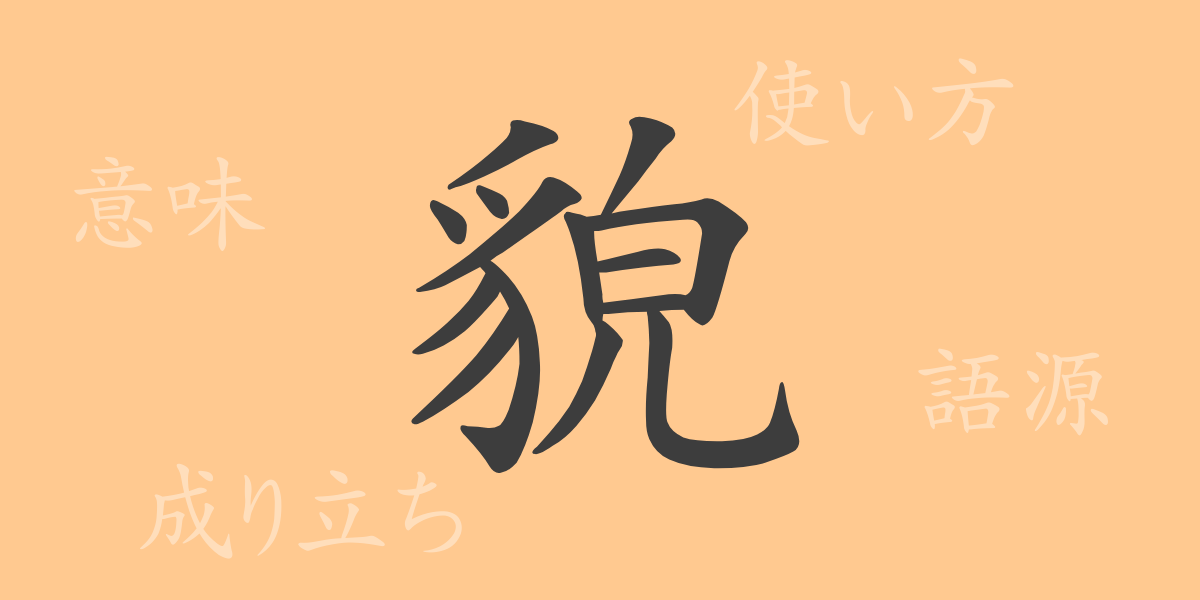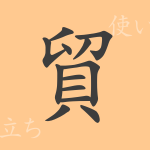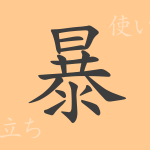In the Japanese language, there are many kanji characters that encapsulate beauty and complexity. One such character is “貌” (ぼう, bō). Although you might not encounter it frequently in everyday life, its form and meaning are steeped in deep history and culture. In this article, we delve into the allure of the kanji “貌” (ぼう, bō), exploring its etymology, meaning, usage, and the idiomatic expressions and proverbs that resonate with the Japanese people.
Etymology of 貌 (ぼう, bō)
The origin of the kanji “貌” (ぼう, bō) traces back to ancient China. This character is a combination of “豸” (けものへん, kemonohen) and “皃” (ぼう, bō). “豸” (けものへん, kemonohen) means beast, while “皃” (ぼう, bō) signifies face or appearance. Thus, “貌” (ぼう, bō) originally referred to the face or appearance of an animal. Over time, it also came to denote the appearance or visage of humans.
Meaning and Usage of 貌 (ぼう, bō)
In modern Japanese, “貌” (ぼう, bō) is primarily synonymous with “かたち” (かたち, katachi) or “姿” (すがた, sugata), referring to a person’s appearance or visage. Metaphorically, it can also indicate the outward appearance or situation of things. “貌” (ぼう, bō) is often seen in literary expressions or specific idiomatic phrases.
Reading, Stroke Count, and Radical of 貌 (ぼう, bō)
“貌” (ぼう, bō) is a kanji with unique readings and structure in the Japanese language.
- Reading: In on’yomi (音読み, on’yomi), it is read as “ボウ” (ぼう, bō). There is no specific kun’yomi (訓読み, kun’yomi) for this character.
- Stroke Count: It has a total of 14 strokes.
- Radical: The radical is “豸” (けものへん, kemonohen), which is also known as the beast radical.
Idioms, Phrases, and Proverbs Using 貌 (ぼう, bō)
Idioms and phrases containing “貌” (ぼう, bō) carry symbolic meanings. Here are a few examples:
- 貌を偲ぶ (かたちをしのぶ, katachi wo shinobu): A phrase used to nostalgically remember the appearance or visage of a deceased person.
- 英俊な貌 (えいしゅんなかたち, eishunna katachi): Refers to someone with a well-formed and beautiful appearance.
- 貌を一新する (かたちをいっしんする, katachi wo isshin suru): Means to completely change one’s appearance or look.
Summary of 貌 (ぼう, bō)
Although the kanji “貌” (ぼう, bō) is not frequently used, it plays a significant role in the rich expressions of the Japanese language. This character, symbolizing human appearance or the outward look of things, is particularly powerful in literature and idioms, conveying emotions and scenes vividly. Through this exploration, we have gained an understanding of the meaning and background of “貌” (ぼう, bō), touching upon the profound charm of the Japanese language.

























